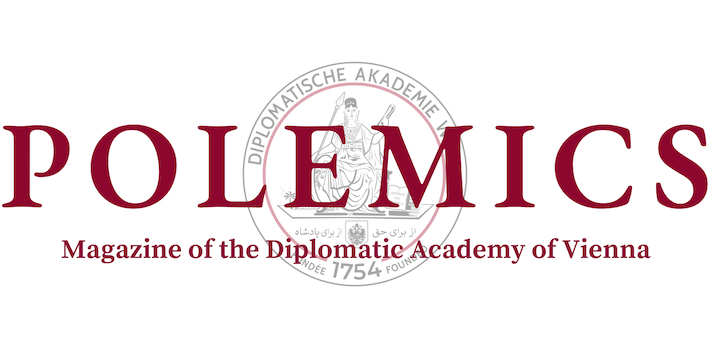“To control space means to control the land, seas, and skies.” The Space Race of the 21st century has intensified awareness about the strategic value of supremacy in outer space: what was once a realm of exploration and human advancement, has rapidly evolved into a battlefield for geopolitical supremacy. In other words, the ability to have control over and utilise outer space according to national interests has become inevitable for major nations. History appears to be repeating itself, as an intensifying rivalry emerges between the United States and China — one that resembles the dynamics of the ‘space race’ of the Cold War era between the U.S. and the Soviet Union. Today, however, the strategic landscape has shifted. It is constantly reshaped by the unprecedented involvement of private actors — a unique challenge that the international community may not yet be equipped to tackle.
The Rise of Private Actors in Space
Traditionally dominated by state actors, outer space in the strategic context has now evolved to be particularly defined by the private sector. This commercialisation of space is now regarded as a defining trend in the “new space race”. In numbers, the global space economy was valued at $350 billion in 2017, and is estimated to reach $2.7 trillion by 2040. While this commercial expansion has undoubtedly been a major factor fostering innovation, it has also fueled strategic advantages for nations, particularly regarding military applications.
For the United States, supremacy in space solidifies its position as a technological and military leader. For China, advancements in space serve its broader goals of economic and strategic global influence. This dual pursuit of space dominance highlights and characterises the growing interplay and importance between private sector innovation and national security strategies.
Diverging Paths: Private Sector Integration in the U.S. vs. China
In the U.S., the involvement of private enterprises in military space operations follows a decentralised, innovation-driven approach. Companies such as SpaceX, Lockheed Martin, and Blue Origin have become integral to the United States’ national security infrastructure, as they are providing groundbreaking technologies such as reusable rockets and sophisticated satellite networks. SpaceX’s Starlink constellation, for instance, has dramatically illustrated the potential of commercial enterprises in military operations, particularly during the Russia-Ukraine war, where it provided vital, secure communications support to Ukrainian forces.
The U.S. government has actively fostered these relationships through significant investments, favourable policies, and contracting frameworks, such as NASA-led projects or the Department of Defense’s innovative contracting mechanisms. This market-driven approach allows for a significant strategic advantage, with rapid technological advancements, a great extent of flexibility as well as cost reduction. Despite many advantages brought by these commercial innovations, however, the American model faces challenges for potential regulatory shortcomings, as private actors are often operating in an oversight vacuum that risks prioritising commercial interests over national security.
Differences in political systems do not seem to hold China back when it comes to promoting private sector innovation: while its approach stands in stark contrast to the U.S. model, it serves as yet another example of how Beijing consistently adapts global strategies into frameworks defined distinctly by “Chinese characteristics”. Through a state-centric “civil-military fusion” strategy, China directly integrates private sector efforts into its national objectives. The China Aerospace Science and Technology Corporation (CASC) and Aerospace Science and Industry Corporation (CASIC) demonstrate this alignment, as their activities directly support China’s strategic capabilities, particularly in developing advanced satellite systems and counter-space capabilities such as anti-satellite weapons. In fact, as State-Owned Enterprises they operate directly under the control of the Chinese Communist Party.
The CASC’s BeiDou Navigation Satellite System has been a success story of this strategy. It was initially developed as an alternative to the American Global Positioning System (GPS) but has recently been opened for global membership. By not only providing global navigation services but also enhancing the strategic capabilities of the Chinese military, it is commonly categorised as a ‘militarised application’. It is also a shining example reflecting China’s broader global strategy of achieving self-sufficiency and strategic influence, as it has been adopted mainly by nations associated with China’s Belt and Road Initiative.
Navigating Risks and Challenges
The integration of private actors into military space operations undeniably ensures impressive advancements in this area. Nevertheless, it simultaneously introduces profound risks and challenges.
To start with, the dual-use nature of commercial space technology introduces significant strategic ambiguity:
If private innovations may serve both civilian and military purposes, how can nations reliably distinguish peaceful intentions from aggressive actions in outer space?
Many current innovations and much of the private sector’s expertise are directed at producing technologies which can be categorised as dual-use. This ambiguity naturally heightens the risks of miscalculation and unintended escalation in geopolitical crises. Furthermore, private satellite networks, critical for military operations, become vulnerable targets, potentially drawing private companies directly into armed conflicts, as was the case with cyberattacks against SpaceX’s Starlink satellites during the ongoing war in Ukraine.
Additionally, the rapid entry of private entities into the space domain complicates international oversight and regulation. Traditional international frameworks including the Outer Space Treaty of 1967 and the Liability Convention of 1972 were not designed to govern private corporations engaging in outer space affairs, or their production of combat-capable technologies. As a consequence, these regulatory mechanisms struggle to manage and hold private actors accountable. This leads to an erosion of established norms, the rise of unilateral initiatives and the creation of an environment susceptible to misunderstandings and escalation.
Where Action is Needed
To manage the emerging challenges posed by private actors in space militarisation, new governance models and updated international frameworks are urgently needed.
Firstly, enhancing transparency through international cooperation and mutual monitoring could significantly reduce ambiguities. Establishing clearer norms and definitions on dual-use technologies could mitigate risks of misunderstandings or accidental escalations. One promising pathway forward can be found in initiatives such as the European Union’s Space Surveillance and Tracking (EU SST) programme, which enhances situational awareness through shared surveillance data and coordinated monitoring.
Secondly, it should be a priority to adapt international frameworks to accommodate the new reality of private sector involvement. Existing treaties must be expanded to explicitly address the responsibilities and liabilities of private actors operating in space, ensuring states retain effective oversight without curbing innovation. Maintaining outer space as a peaceful domain should be a priority for all nations. A war that is fought in space would pose severe risks and its consequences would be felt tremendously on Earth.
Finally, coordination can no longer lag behind ambition. Fostering regular dialogue between governmental authorities, industry stakeholders, and international organisations could facilitate communication, and most importantly, counter unilateral and fragmented approaches. Such initiatives could help establish de facto norms that are acceptable to both state and private actors and reduce the likelihood of unintended conflicts in the future.
The Space Race Redefined
As we navigate the complex dynamics of the new Space Race, the increasing engagement of private entities in national military strategies by the U.S. and China represents a major transformation with international security implications. While their national models of integrating private sectors may differ at first glance, both approaches ultimately elevate the sector’s strategic importance. Looking ahead, comprehensive governance reforms, collaborative regulatory frameworks, and sustained diplomatic efforts will be crucial. Conflict in space is not an inevitability, but it is fast becoming a palpable concern. With global tensions deepening by the day, the importance of securing dominance beyond Earth is only gaining alarming momentum.
Written by Fiona Haiwen Rischka, Edited by Sarah Jiayi Drogies
Photo credit: Space shuttle view outside the Earth by NASA








